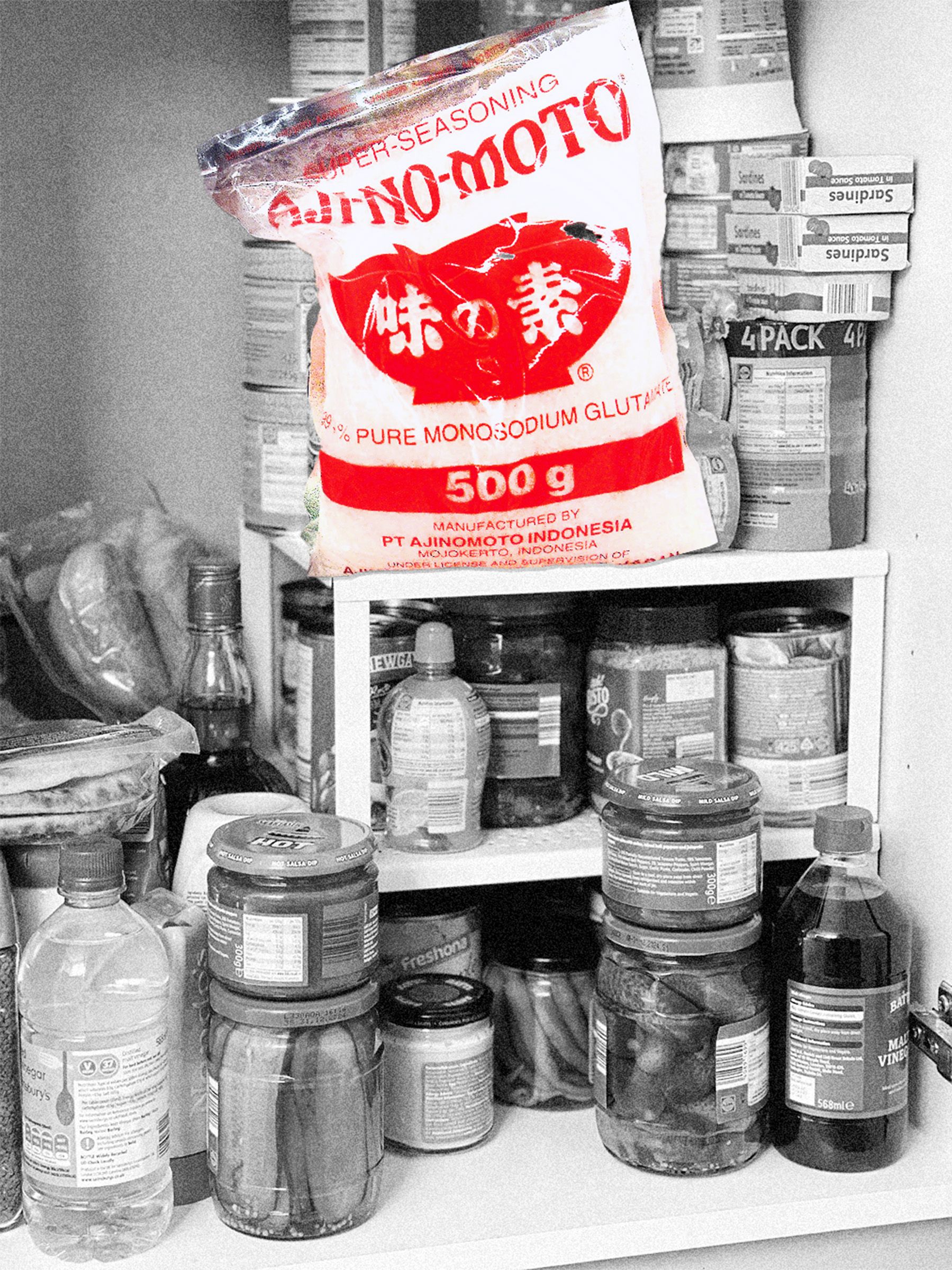All products featured on WIRED are independently selected by our editors. However, we may receive compensation from retailers and/or from purchases of products through these links.
Making a recent dinner, my wife Elisabeth put together Sohla El-Waylly‘s “hot and tingly” smashed cucumber salad, a wisp of a recipe that combines favorite ingredients like cukes, chili crisp, salt, sugar, and rice vinegar, along with something less commonly used in our household, MSG. Tucking in, it wasn’t a surprise that the salad was good, but the monosodium glutamate gave it an extra savory deliciousness that made me wonder if Elisabeth intentionally set the salad bowl out of my reach.
In my decades living in North America and Europe, MSG was an unfortunately infrequently used ingredient, yet here it was making our tongues happy. Being drawn to it now was inspired by a trend I picked up on while reading some of the best new and recent cookbooks.
Easiest to pick out is the just-released Salt Sugar MSG, by Calvin Eng and Phoebe Melnick, that’s a Cantonese-American extravaganza of deliciousness. Tu David Phu and Soleil Ho made regular use of MSG in 2024’s The Memory of Taste, and Meathead Goldwyn makes a plea for its use with a special section way up on page five of his brand-new cookbook, The Meathead Method.
Plugging MSG into Eat Your Books, a subscription service that allows you to search recipes from within your own cookbook collection, I could see that among my cookbooks, El-Waylly makes great use of it in her 2023 James Beard Award book, Start Here. Helen Graves has a recipe for an MSG martini in her BBQ Days, BBQ Nights, along with a warning that—I’ll paraphrase—you’ll likely get hammered if you have more than one of them.
Salt Sugar MSG, By Calvin Eng with Phoebe Melnick. Buy it at Amazon ($29), Bookshop.org ($35), or Powell’s ($38)
Courtesy of Clarkson Potter/Crown Publishing
If I searched Eat Your Books for MSG but took out the results from these books, the list dried up to almost nothing. That’s a shame considering what great work the ingredient does in the kitchen. El-Waylly uses it in that cucumber salad, a cauliflower and coconut soup, and a cool pistachio ranch fun dip made fun because she loves ranch. Meathead likes it on chicken, mac and cheese, and meat in general. Tu David Fu uses it with stir-fried clams, sticky rice dumplings, and tomato-braised salmon belly. Calvin Eng uses it on just about everything.
“I keep salt, sugar, MSG on my counter all the time,” says Eng who’s such a fan that he has a little MSG heart tattoo on the back of his left arm.
A self-professed “lover and user of MSG on a massive scale,” he still has aha moments with it that help him appreciate its power. His favorite example is Cantonese chicken broth with scallions, garlic, ginger, and Shaoxing wine, finished with salt and MSG. Once for a private dinner, he featured a head-to-head tasting of the broth with salt next to broth with salt and MSG and was deeply impressed at the difference.
“It adds so much umami,” he says, referring to the savory “fifth taste” that accompanies salt, sweet, sour, and bitter. “It adds a layer. It makes you want more.” Indeed, I tried little head-to-heads with mugs of my own broth and enjoyed getting a hang of its effects and how to use it. Salt adds depth, but salt and MSG can make broth bigger, deeper, rounder, and more delicious.
Seasoning with MSG takes practice. Eng mentions that he didn’t fully understand it until he worked in restaurant kitchens, but offers a simple suggestion on how to get used to using it.
“Have it on your counter next to your salt,” he counsels. “Use both, but use less salt than you normally would, and taste as you go.”
More Than This
MSG is derived from glutamic acid (one of the amino acids) and is naturally occurring in delicious, umami-packed foods like anchovies, parmesan, tomatoes, and kelp.
When I asked chef turned food scientist, author, and fermentation expert David Zilber about how MSG makes things so delicious, he responded with his own question: “Shall I put this in Cheeto terms for you?”
My response was an emphatic yes.
“Glutamate is one of the most abundant amino acids in the living world. When you take it out of its natural context and add it to other foods in large quantities, it gets you to eat more,” he explains. “They are like the signals in nature that the human body looks for when searching for the most digestible and nutritious foods. It hacks ancient and primal physiology to make bland foods more palatable and moreish.”
Perhaps this makes my whole ritual of keeping a damp cloth next to my snack-touching hand on my annual (?) Cheeto binge make more sense.
Cravings are certainly affected by what we do and don’t like, Zilber explains, “but at the chemical level, smell and taste are the most ‘hands in the dirt’ senses our body has.”
Courtesy of Clarkson Potter/Crown Publishing
For as helpful as it is for making food better, the ingredient has had a tough go of it in North America. MSG “is derived from glutamic acid, one of the 22 amino acids,” says my 2007 copy of The Food Lover’s Companion, which calls the ingredient a popular flavor enhancer in Japan and China.
It also says “some people have reactions to MSG that caused them to suffer from a variety of maladies, including dizziness, headache, flushing, and burning sensations,” information that is, like my copy, dated. This stems from a 1968 letter from Robert Ho Man Kwok printed in the New England Journal of Medicine, citing symptoms like dizziness, headache, and nausea that were dubbed “Chinese restaurant syndrome” and prompted many Chinatown restaurants around the world to hang glowing neon “NO MSG” signs on their front windows.
Problematically, it appears that either Kwok’s story was more anecdotal than science-based or an orthopedic surgeon named Howard Steel penned the letter as part of a $10 bet with a colleague to see if he could get it published in a prestigious medical journal. Regardless, the Journal never made enough of an effort to correct things as they spiraled into a problem and a faux syndrome was born. (More on this in act one of this April 2025 episode of This American Life.)
Stuff like this makes for yarns that would be a lot more enjoyable if they didn’t trail a 50-year xenophobic stink in their wake, and the “MSG is bad for you” stereotype persists. Too much of it can be harmful to you if you’re ingesting ridiculous quantities. As El-Waylly writes, “If you have 1/2 cup of it on an empty stomach without food, you might feel ill, as you would from eating 1/2 cup of salt.” The dose makes the poison.
Eng’s solution for promoting MSG, and one he encourages other chefs and food professionals to mimic, is right there on the cover of his book: Talk about it. Normalize it. Try it out.
Personally, I grabbed the aforementioned books and started cooking from them. Along with the hot and tingly cuke salad, El-Wally’s dill pickle cucumber salad with pickle brine, onions, and toasted coriander seeds is another great place to start, and something that nearly set off a dinnertime squabble over who got the last bowl at a Ray-family meal. I tried Eng’s popcorn recipe, which also features a dusting of toasted Szechuan peppercorns, fried garlic, MSG, and melted butter. I riffed on his sour cream and green onion dip, making mine with caramelized onions, then showering it with chives from my garden, quick-pickled onions, black pepper, and crumbled store-bought fried onions.
Not long afterward, I made a rather exquisite bagel with butter, cream cheese, smoked salmon, shallot, scallion, salt, pepper, and MSG. It’s hard for something with ingredients this fantastic not to be delicious, but I started thinking that the MSG turned them all into the best versions of themselves.
There’s a ways to go before MSG is anywhere near as mainstream as salt, but until then, I invite you to join me on the Normalization Team and, like Eng suggests, keep a container of it on the counter, right next to the salt.




